Back pain is common in pregnancy. It is caused by changes to your body to accommodate your growing baby. You can change and support your posture to help improve lower back pain.
When to get help
Non-urgent advice: Talk to your GP or midwife if:
- your back is very painful and affecting your quality of life
You may be referred to a physiotherapist.
Urgent advice: Contact your GP urgently if:
you have back pain and you:
- lose feeling in one or both of your legs, your bum or your genitals
- cannot control the need to pee or poo
- feel the pain is intense at the start of the second or third trimester - this could be a sign of early or premature labour
- have a fever, bleeding from your vagina or pain when you pee
- have pain under your ribs, on one or both sides
- suddenly need to pee very often
Causes of back pain in pregnancy
Back pain is caused by changes happening to your body to accommodate your growing baby.
These changes include:
- your posture changing to accommodate the increased weight you're carrying
- changing hormones - these can make your pelvis and back feel weaker
- more pressure and less support for some joints in your back and pelvis
- tiredness and stress - these can intensify any pain or discomfort in your body
How to reduce back pain in pregnancy
Being aware of your posture and trying to improve it can reduce your risk of back pain.
Do
-
think about your posture when you are sitting or moving
-
avoid standing for long periods of time
-
tuck your hands under your bump for support if you have to stand for long periods
-
keep the weight even between your two legs - avoid shifting your weight to the left and the right leg
-
wear comfortable, supportive, low-heeled shoes
-
sit with your bottom against the back of a chair and sit up tall - put a small cushion at your lower back if needed
-
get all the sleep you can - this can help reduce pain
-
stay active with gentle exercises and stretching
Don't
-
do not lift heavy objects - if you need to lift anything, bend your knees and keep a straight back
Correct posture during pregnancy
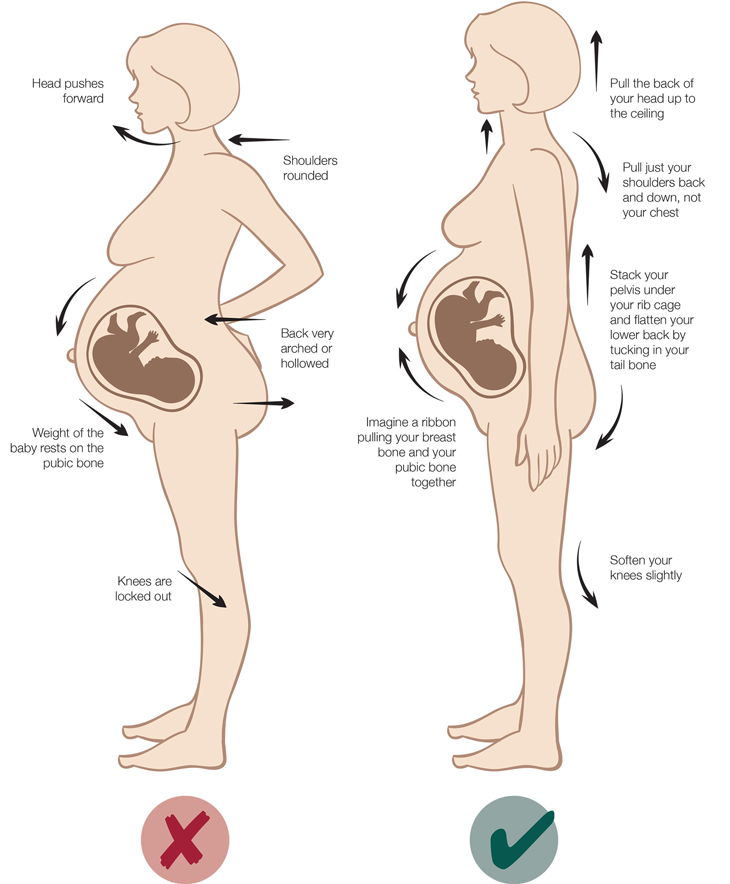
Keep changing your posture
Change your position often to avoid over-stressing your joints.
You can also practice improving your posture by following these steps:
- Keep your knees soft.
- Stack your pelvis under your rib cage.
- Tilt your pubic bone and breastbone towards each other.
- Roll your shoulders back and down.
- Tuck your chin.
- Keep the back of your neck long.
Do a back exercise
You can try the following exercises.
Child's pose
This exercise helps to relieve the pressure on your back. It give the joints and muscles of the lower back space to open and lengthen.

- Kneel on the floor, with your knees spread wide and your feet in close to each other. This allows space for your baby bump.
- Now allow your bum to sit right back onto your heels. Place a cushion at your heels if it feels more comfortable.
- This should feel like a relaxing, comfortable stretch in your low back.
Cat/cow
This exercise will help strengthen the abdominal (stomach) muscles that can support and ease back pain during pregnancy.
- On all fours, make sure your knees are under your hips and your hands are under your shoulders. Your spine should be straight and in a neutral 'box' position.

2. Hollow your back as shown in the image above.
3. Then follow this with a rounded spine, as shown in the image below.
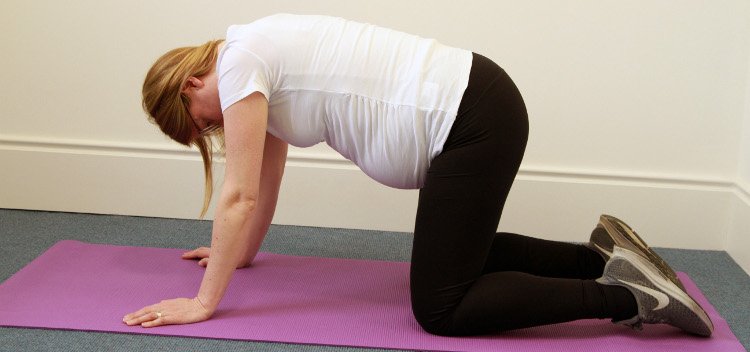
4. Feel a stretching sensation along all parts of your spine as you push your back up towards the ceiling.
5. Breathe comfortably and hold this position for 20 seconds.
6. Return your back to the neutral position in step 1.
7. Repeat this 5 times.
Gentle twist
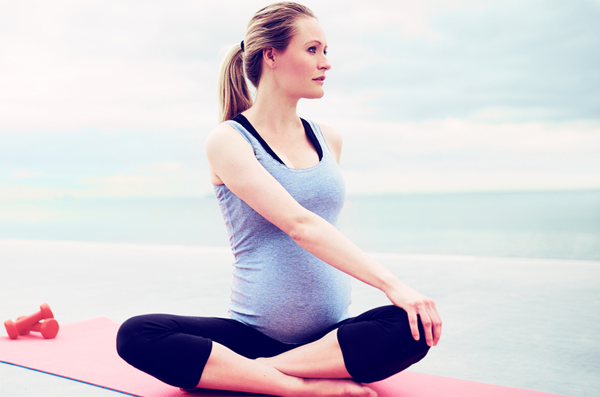
- Sit tall on your mat with your legs crossed. Feel both bum cheeks connect with the mat.
- Gently twist to the left. This should feel comfortable at all times. Keep your bum cheeks connected to the mat.
- Keep breathing comfortably.
- Hold for 20 seconds.
- Repeat 3 times.
- Now repeat this exercise, twisting to the right this time.
Side stretch
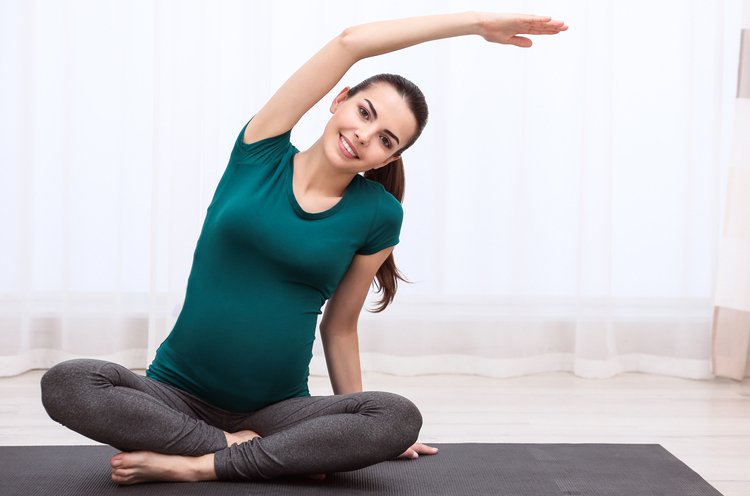
- Sit cross-legged on the mat.
- Place your left hand on the floor and gently point your right arm up towards the ceiling.
- Now gently lean towards the left side. Both bum cheeks should stay in contact with the floor.
- Take long, deep breaths in this posture. Gently relax into this stretch.
- Hold for 20 seconds.
- Repeat 3 times.
- Now swap sides and perform the same exercise, stretching to to the right.
Clam exercise
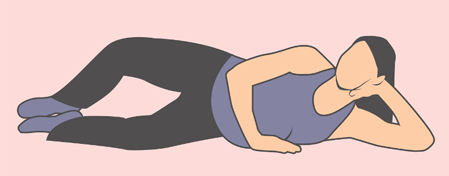
This exercise should feel comfortable and pain-free to perform.
- Lie on your left side with your back flat against the wall. Bend your knees and place your feet flat against the wall.
- Hug your bump close to your spine.
- Now open and close your right knee.
- Repeat 20 times or until your bum muscle begins to feel too tired to lift the knee.
- Rest for 30 seconds.
- Repeat 2 more sets.
- Now change positions and repeat the exercise lying on your right side.
